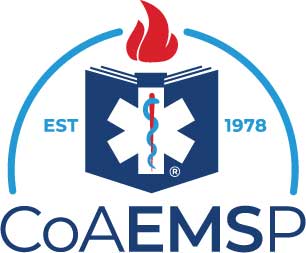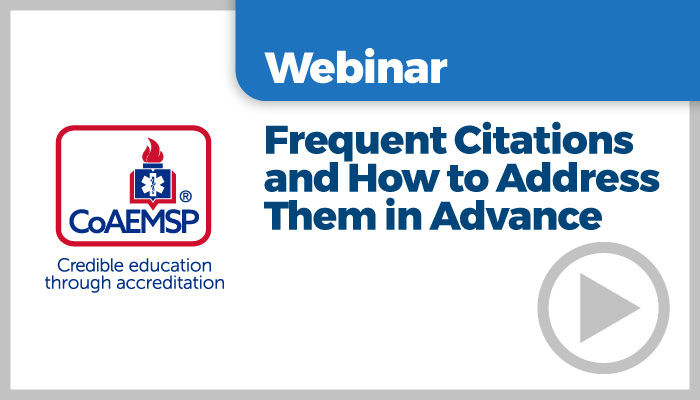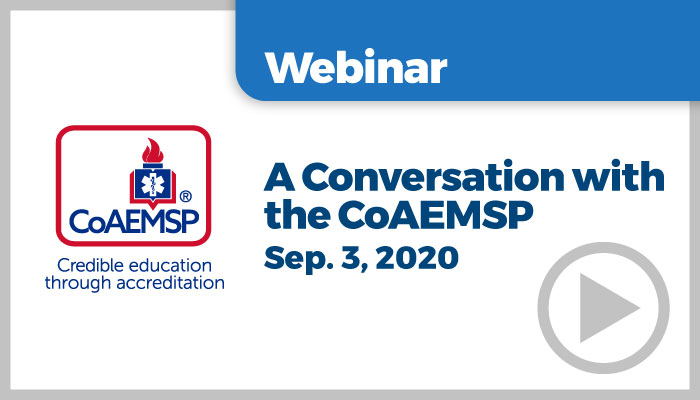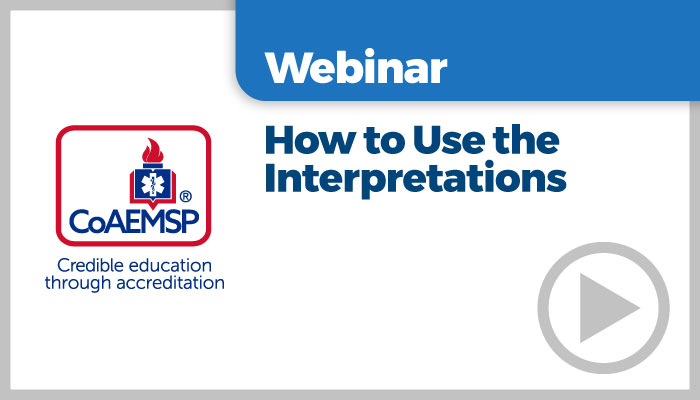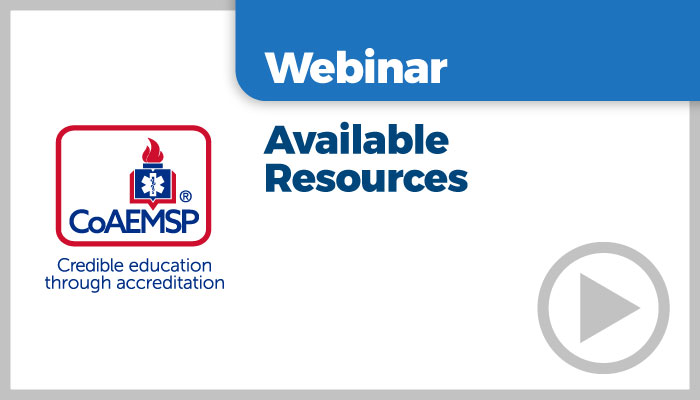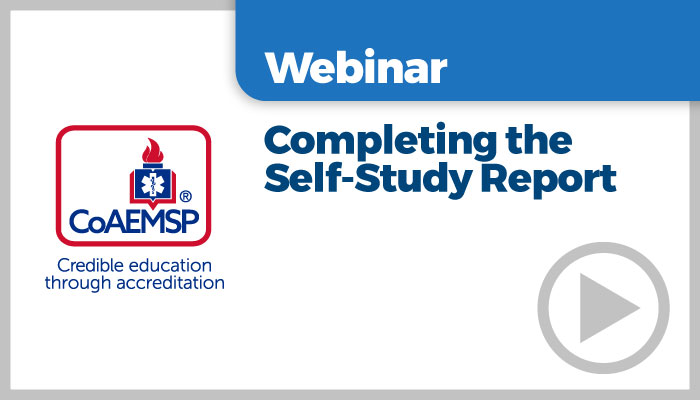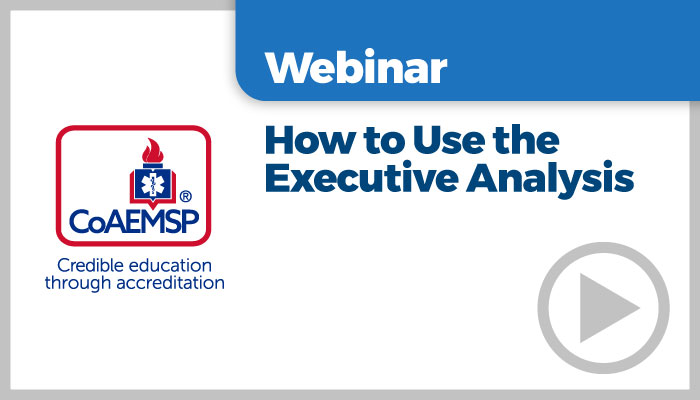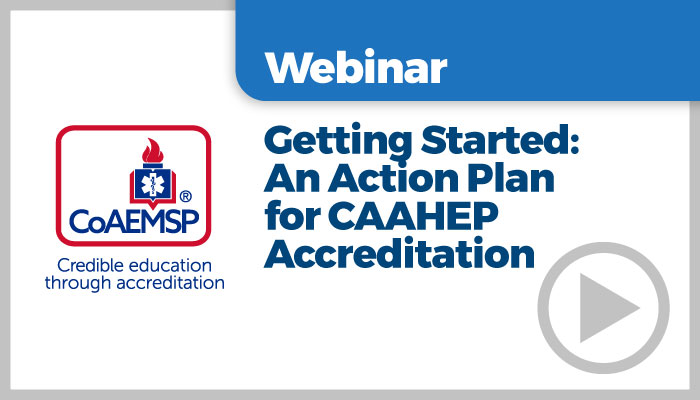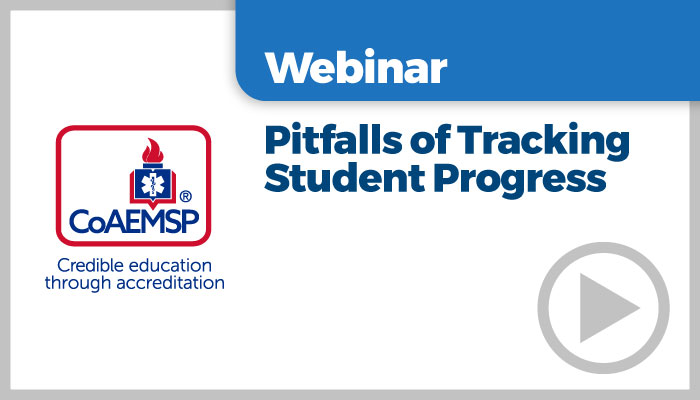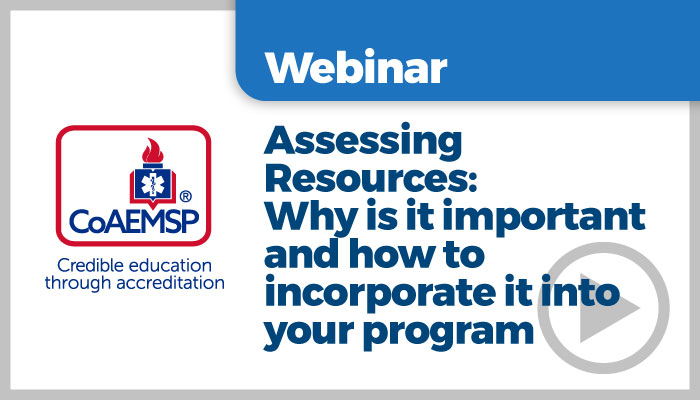Speaker: Patricia Tritt
Moderator: Jennifer Anderson Warwick
Recorded October 14, 2020.
Site visits can appear to be a mystery and the Program Director wonders “What will they be looking for?” The answer is fairly simple, and the self-study and site visit process is actually an open book test. The CAAHEP Standards and Guidelines and the CoAEMSP Interpretation documents provide the “test items” and the Executive Analysis raises potential problems the Program has the opportunity to address prior to the site visit. When the Program adopts the “accreditation is an everyday activity” philosophy, the necessary evidence is compiled throughout the accreditation cycle. This presentation will explore the most frequently occurring citations and review the keys to avoid succumbing to these pitfalls.
Resources
| Document Link | Date | Type |
|---|---|---|
| PowerPoint: Frequent Citations and How to Address Them in Advance | Oct 2020 | pptx |
| Slides: Frequent Citations and How to Address Them in Advance | Oct 2020 |

